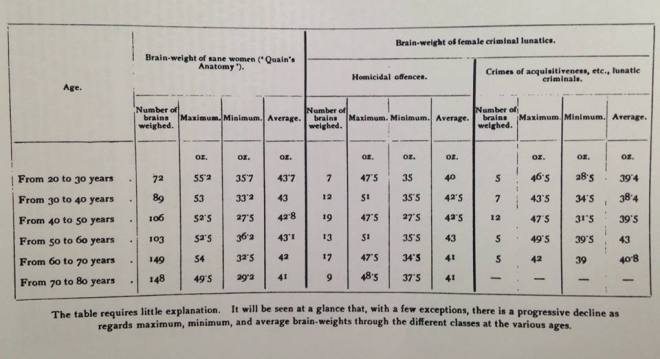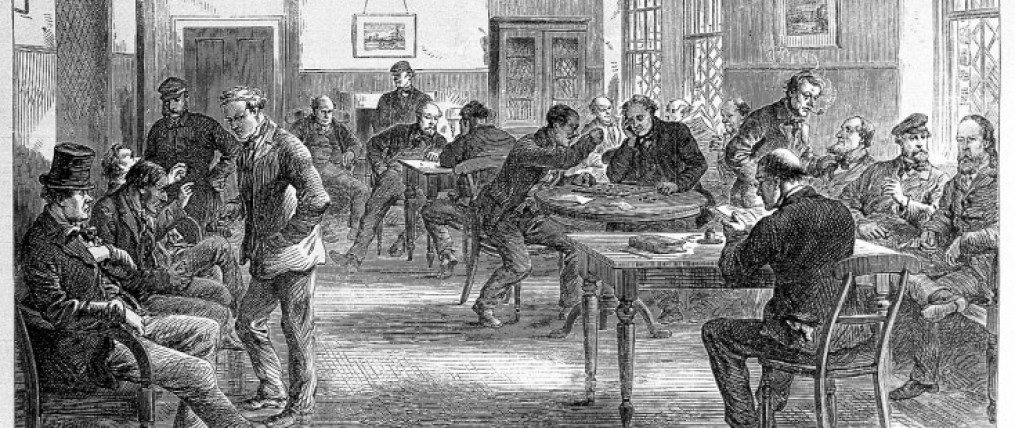Many of my previous posts have concentrated on Broadmoor’s men, primarily because they were the focus of my PhD research. Here, I’m going to focus on Broadmoor’s female patients. I’ve been sitting on female case files, as well as publications written by Broadmoor’s staff about these patients for years, and this will be the first of many posts dedicated to the asylum’s female population. Of course, owing to years of research I do have loads more posts lined up on Broadmoor’s male patients too. Following my hiatus from blogging, my plan is that this post will be the first of many over the coming months.
In 1902 Broadmoor’s Deputy Superintendent, John Baker, presented a fascinating paper to other medical men on the asylum’s female criminal lunatics.[i] Here, I’m going to sum up some of his key findings.
There were two types of patient at Victorian Broadmoor: Queen’s pleasure patients (individuals found insane when tried) and insane convicts (those convicted of a crime and transferred to Broadmoor from prison after allegedly developing insanity whilst incarcerated). By the turn of the twentieth century, most of Broadmoor’s female patients were insane convicts who had been convicted of crimes including larceny, arson, robbery and housebreaking. 55% were under 30 years of age, 45% were middle-aged and 5% were old women. The most common type of insanity Baker observed amongst these women was delusional mania. As a result of this, they were violent, used obscene language, degraded in their behavior and noisy. Their delusions were of suspicion and persecution, and many demonstrated aural and visual hallucinations. Baker noted:
Very frequently these insane manifestations have a sexual bearing, and it is noteworthy that the ranks of this class of lunatic are mainly recruited from women of loose character and irregular life.
In a previous post I noted the friendships that formed between the asylum’s female patients, but Baker observed something different:
In their quieter moments they seek one another and herd together like epileptics; but jealousy soon springs up, they denounce one another, conspire against the other, friendship is hardly born before it dies, and is transformed into enmity.
Baker observed that most female convicts were lazy, and usually unwilling to work.
In addition to these insane convicts there were Queen’s pleasure patients, most of whom had committed infanticide. Baker noted that the huge number of mothers who had killed their children present in the asylum was down to one fact: ‘the lawyers are more ready to accept a plea of insanity, pity inspires both judge and jury, and the opinion of the expert is not often required in evidence’. The insanity Baker attributed to these women tended to correspond with their maternal function: insanity of pregnancy, puerperal insanity, and the insanity of lactation. Based on the Broadmoor cases, he found that infanticides occurred in the following: In the insanity of pregnancy: 5%; in puerperal insanity: 35%; in the insanity of lactation: 60%. Baker suggested the insanity of lactation was higher than the others because ‘lactation is an exhausting process’ and women ‘frequently’ ‘break down’. In addition, he observed that many poorer women ‘seem to be pregnant or nursing mothers all the time, who toil and moil all their married life’: ‘Is it to be wondered at that many develop melancholia, and frequently become actively suicidal?’ Based on the cases of 115 females considered to be insane due to lactation, Baker found that it was older women who suffered more from this particular type of insanity, and in comparison to younger sufferers they were unlikely to recover. He suggested a number of reasons for this, including:
-
The age of the patient. As a rule the older the patient on admission the less chance of recovery.
-
The number of children. Were a woman has been exhausted and debilitated by frequent pregnancies, the prognosis is generally unfavourable.
In the majority of infanticidal cases, the type of insanity was ‘melancholic, – simple, delusional, resistive, or stuporose’.
Whilst Baker derided criminal anthropology, at the end of his paper he referred to, but didn’t elaborate on,
the curious and interesting pathological fact that the brain-weights of homicidal female lunatics were below the normal standard of sane women, and the brain-weights of lunatic criminals – the thieves and the fire-raisers- were still more deficient in this respect
He provided the following table.

Future blog posts will elaborate on some of the causes of insanity mentioned here, and the fascinating cases of some individual female patients will be discussed.
[i] John Baker, ‘Female Criminal Lunatics: A Sketch’, Journal of Mental Science, 48, 1902, 13-28

A relative by the name of Ellen Harper was sent to Broadmoor following the murder of her new born daughter. She was just 17 yrs old. Is it possible to trace individual records for her ? If so how do I go about it ?
It’d depend when she was at Broadmoor (there are strict rules re. accessing records), but the Berkshire Record Office holds some patient case files. It’s probably the best place to start.